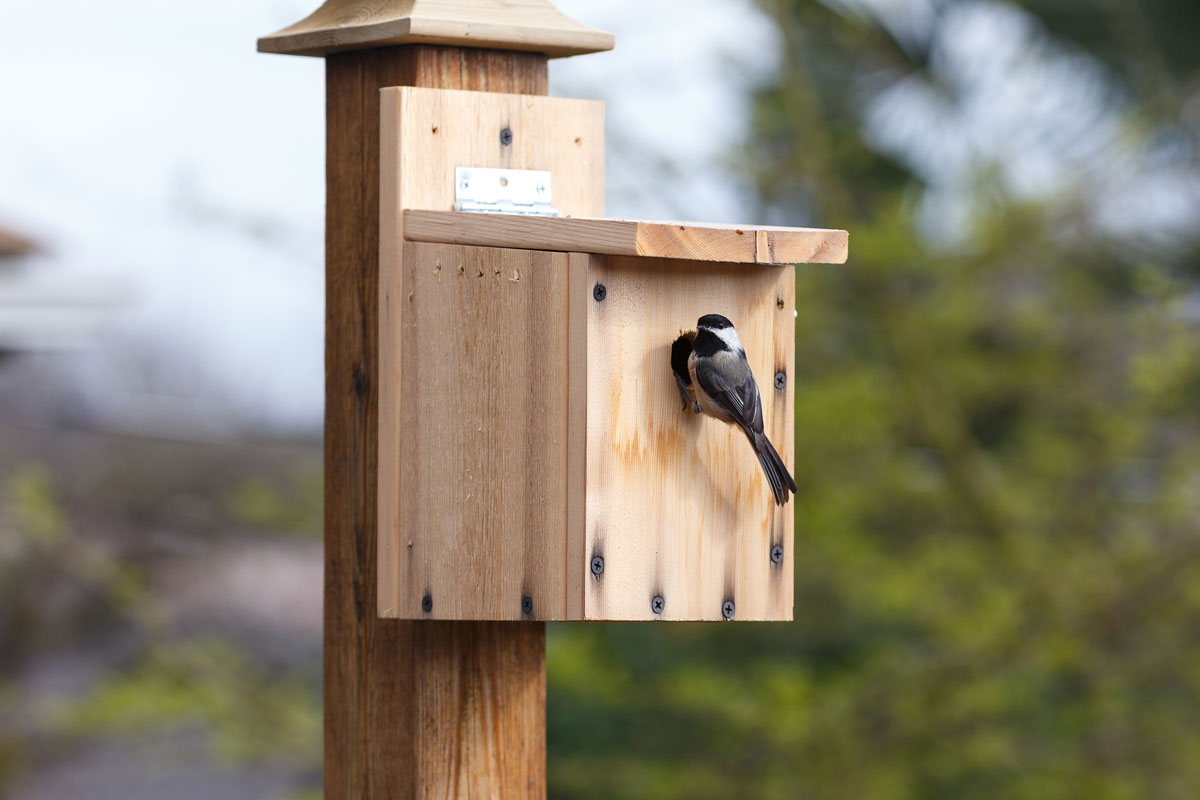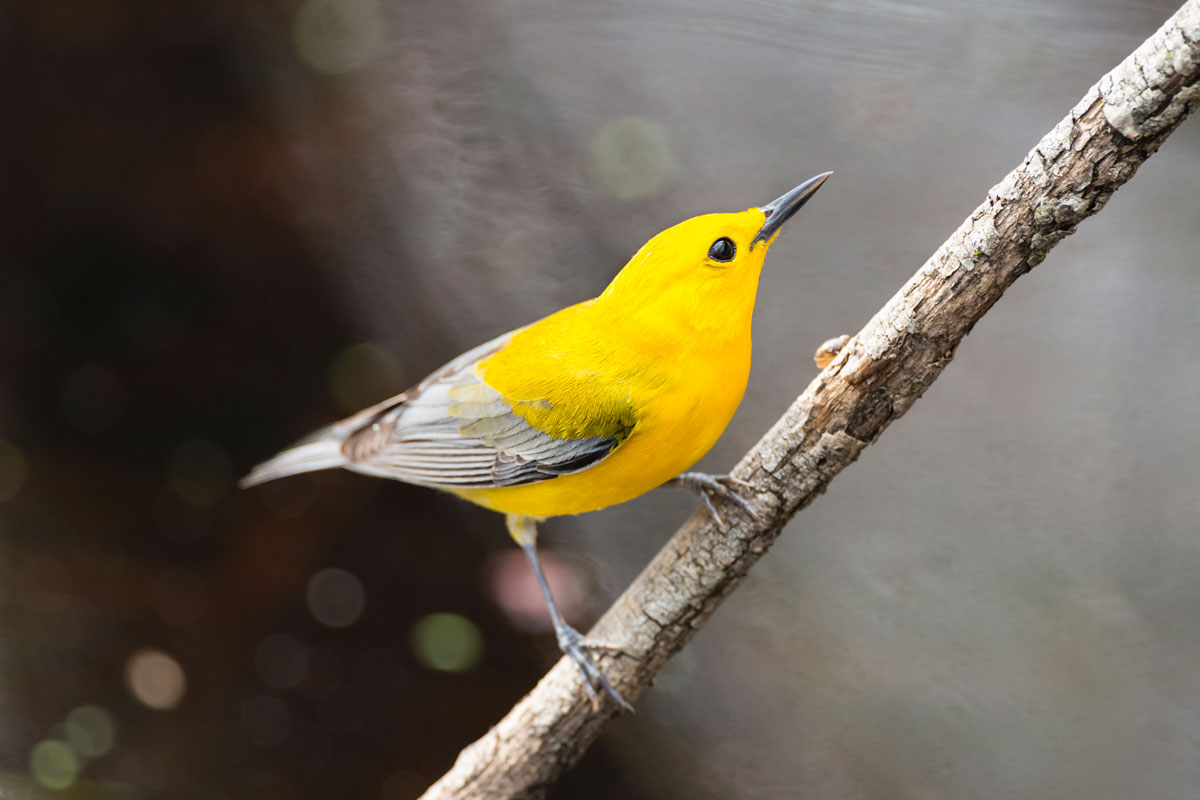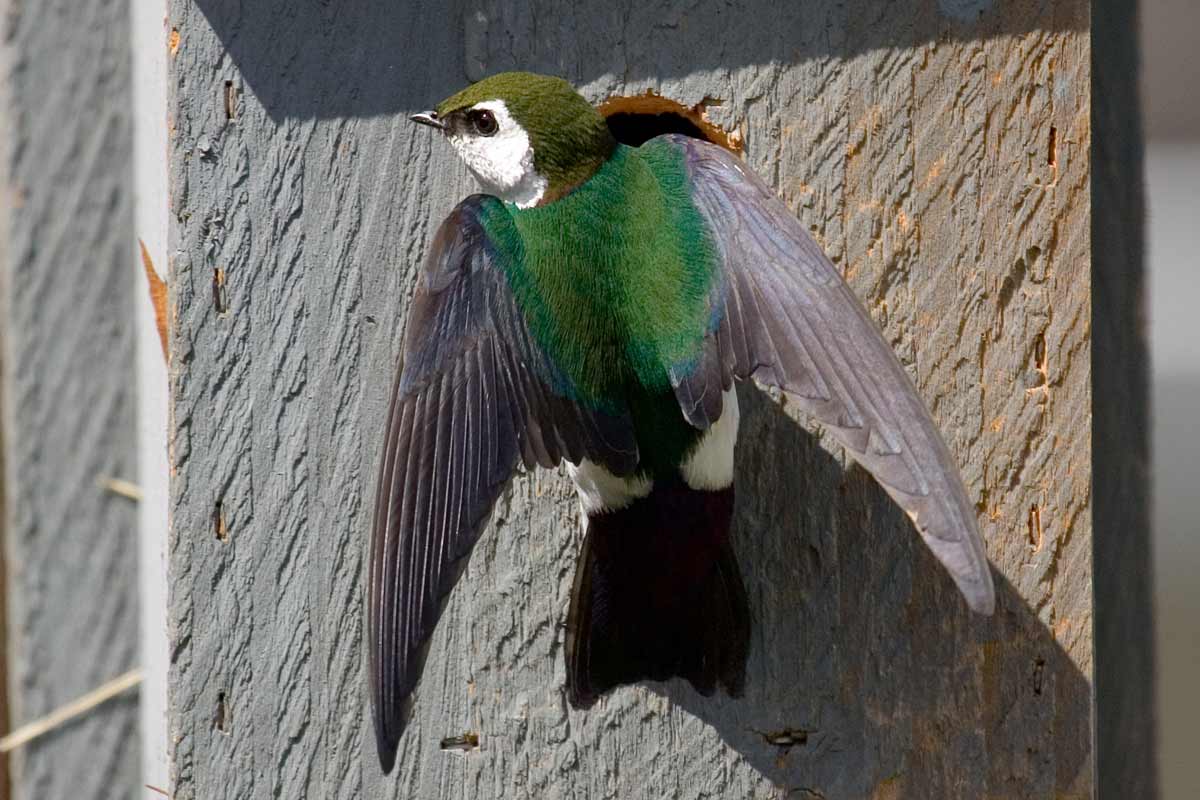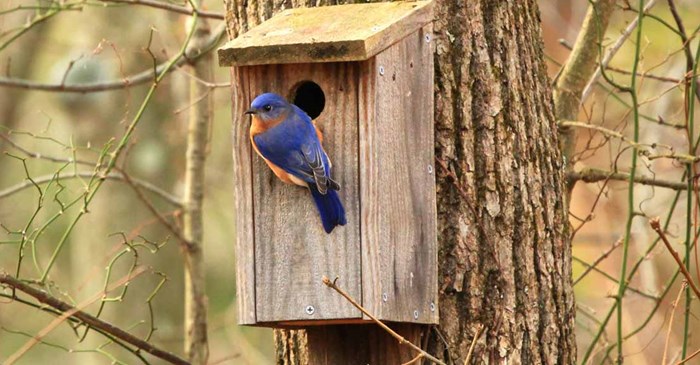Setting up a backyard nesting box is a wonderful way to support the local bird population. Birds that use nesting boxes instinctually seek safe, enclosed spots to lay their eggs, such as inside a woodpecker hole in a tree, an opening in a cliff, building, or post. Because humans tend to remove dead and dying trees, that leaves a shortage of suitable nesting sites for these songbirds.
If you see a cavity-nesting species in your neighborhood, consider setting up a nesting box. Even though spring is weeks away, now's the time to start planning. You’ll want those nesting sites to be ready when the birds are.
Eastern Bluebirds
When they get started: March to early April; as early as February in southern states
To woo females, a male bluebird enters and exits the nest box, carrying grass and other nesting material in his beak. The match becomes official when the female enters the nest box with him, and they may even stay together for several seasons. Bluebirds will go on to raise 3-4 broods in a nesting season, as many as five in warmer climates.
Cornell Ornithology Lab Nest Watch data suggests nest boxes with predator guards have slightly greater success rate in preventing predation where nest boxes are used.

To attract a Black-capped Chickadee to your nesting box, add a few inches of wood shavings so they can excavate the area. devonyu / iStock / Getty Images Plus
Black-capped Chickadee
When they get started: Early to mid-April
After the female scouts and chooses a nesting site, she’ll build a soft, cup-shaped nest. But their instinct to excavate the nesting site means they prefer nesting boxes where the human has left a 2-3 inch layer of wood shavings at the bottom. As they remove these shavings by the beakful and scatter them on the ground, it provides a visible sign your box was chosen.

If you live near a wooded swamp or waterway, adding nesting boxes to your yard may attract a Prothonotary Warbler. Pchoui / iStock / Getty Images Plus
Prothonotary Warbler
When they get started: Mid-to-late April
Real estate is the love language of these canary-colored birds found throughout the southeastern U.S. The male will place moss inside three or four chosen nesting locations to get ready for the “showing.” Once the female chooses the best site, she finishes construction before laying the eggs. Because of habitat loss, this species is in decline. If you live adjacent to a wooded swamp or waterway, consider putting up a nesting box. It’s the best way to draw them into your backyard and get a look at them in action.

Violet-green Swallows can be found nesting in nesting boxes starting in mid to late May throughout the region west of the Rocky Mountains. BirdImages / iStock / Getty Images Plus
Violet-green Swallow
When they get started
These beautiful swooping insect catchers can be found throughout the region west of the Rocky Mountains, nesting in old woodpecker holes and in cliffs. Like the Purple Martin, they nest in colonies, up to 25 birds, and can be found near open woodlands or a body of water. To draw them into your backyard, install several boxes.
Before you set up your birdhouse, do your homework. Make sure the size and placement of the box creates the ideal nesting conditions for your targeted species. Then, keep a protein source ready by keeping the feeders filled with Lyric Fine Tunes No Waste Mix. This shell-free blend means less mess for you. And the finely cut pieces are well-suited for small beaks.
